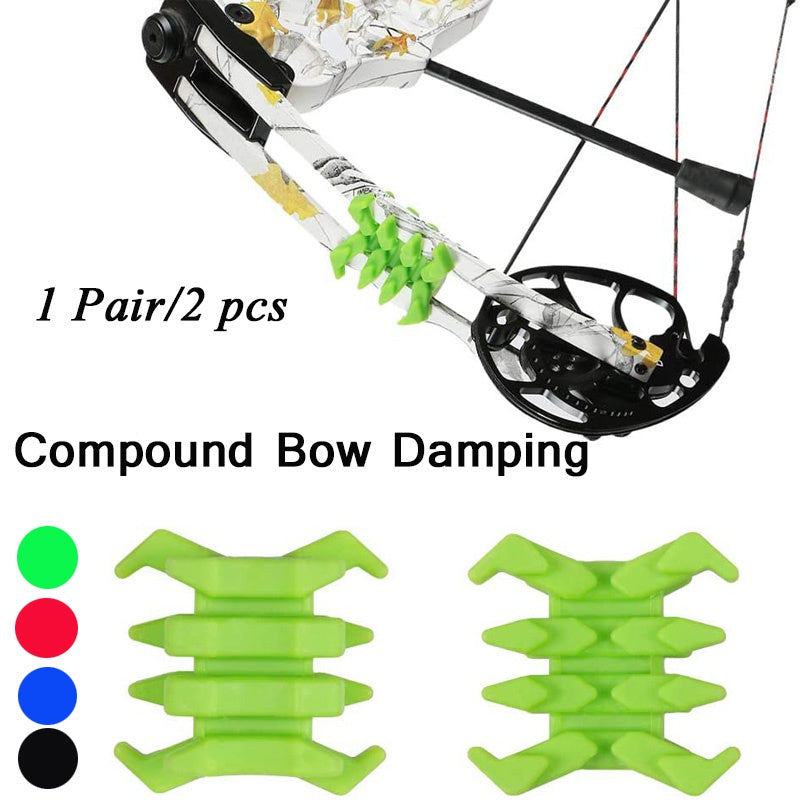Maximize Your Archery Accuracy With These Bow Stabilizer Techniques
One essential component that can dramatically influence your efficiency is the appropriate use of bow stabilizers. Whether you are a seasoned archer looking to improve your abilities or a novice eager to enhance your precision, mastering these bow stabilizer techniques could be the key to hitting your mark with unparalleled consistency.
Benefits of Utilizing Bow Stabilizers
Using bow stabilizers can considerably improve an archer's precision and overall performance by lessening bow torque and resonance. In addition, bow stabilizers wet resonance, which not just boosts the convenience of capturing yet additionally prevents the bow from leaping upon launch, hence assisting in maintaining correct goal.
Furthermore, bow stabilizers can assist in holding the bow constant, specifically during gusty conditions or when shooting from longer ranges. The added weight at the front of the bow offers stability and equilibrium, enabling the archer to concentrate on intending without the disturbance of bow motion. On the whole, the advantages of making use of bow stabilizers prolong beyond just precision, enhancing the archer's experience and efficiency in different shooting circumstances.
Picking the Right Bow Stabilizer
Choosing the suitable bow stabilizer is critical for optimizing your archery tools and boosting shooting efficiency. Larger stabilizers can aid decrease bow torque and soak up even more resonance, leading to a steadier aim.

Finally, take into consideration the design of the stabilizer. Some stabilizers come with adjustable weights or dampeners that enable you to personalize the balance and feel of your bow. Ultimately, selecting the right bow stabilizer involves locating an equilibrium between weight, size, product, and layout to boost your shooting accuracy and overall efficiency.
Proper Setup Techniques
To make certain ideal efficiency and safety and security in archery, understanding correct installation techniques for your bow stabilizer is important. The initial step in setting up a bow stabilizer is to recognize the right positioning on your bow. A lot of stabilizers are connected to the front of the riser, listed below the grasp, to aid counterbalance the weight of accessories such as quivers and views. Guarantee that the stabilizer is not conflicting with other parts or hindering your shooting see this here form.
Following, safely affix the stabilizer to the bow using the proper placing hardware. It is vital to tighten the stabilizer comfortably to avoid any type of wobbling during shots. Some stabilizers come with flexible weights that can be included or gotten rid of to fine-tune the balance of your bow. Try out various weight setups to locate the optimum balance that fits your shooting style.

Adjusting Stabilizer Weight and Length
After guaranteeing the correct installation of your bow stabilizer, the next step discover this includes changing the weight and length to maximize its efficiency in boosting archery precision. The weight of the stabilizer plays a that site crucial role in reducing bow motion during the shot cycle.
When it concerns stabilizer length, locating the best equilibrium is vital. A longer stabilizer can provide greater security by raising the range in between the bow and the weight at the end of the stabilizer. This added range improves the supporting result, particularly in windy conditions or when shooting at longer distances. Conversely, a much shorter stabilizer uses much more maneuverability and may be liked by archers who value dexterity and fast motions during shooting.
Advanced Stabilizer Tuning Tips
Accomplishing optimal bow stability and precision in archery requires a nuanced method to advanced stabilizer adjusting. Advanced stabilizer tuning includes fine-tuning numerous parts to enhance the bow's balance, decrease resonance, and enhance total precision. One essential method is to trying out various stabilizer arrangements, consisting of side-bar and back-bar arrangements, to discover the perfect equilibrium between security and maneuverability for your shooting style. bow stabilizer. Additionally, adjusting the angle and positioning of the stabilizer can have a considerable influence on how the bow responds upon launch.
An additional important aspect of sophisticated stabilizer tuning is maximizing the damping residential or commercial properties of the stabilizer system. This can be attained by incorporating added dampening devices such as rubber dampeners or harmonic stabilizers to further minimize vibration and noise. Checking out different materials for the stabilizer building, such as carbon fiber or aluminum, can also affect the bow's performance by modifying its weight distribution and tightness. By thoroughly make improvements these innovative stabilizer elements, archers can optimize their accuracy and consistency on the range or in competitors.
Verdict
In verdict, taking full advantage of archery accuracy can be accomplished via the appropriate option, setup, and change of bow stabilizers. In general, including bow stabilizers into archery method can lead to improved performance and raised accuracy.
Utilizing bow stabilizers can considerably boost an archer's accuracy and overall efficiency by minimizing bow torque and vibration. Longer stabilizers give greater stability and equilibrium, especially for long-distance shooting, while shorter stabilizers supply more adaptability and are less complicated to maneuver in limited rooms (bow stabilizer). Carbon fiber stabilizers are long lasting and light-weight, while aluminum stabilizers are robust and supply superb resonance dampening
A longer stabilizer can offer higher security by raising the distance between the bow and the weight at the end of the stabilizer.One more vital facet of innovative stabilizer tuning is optimizing the damping homes of the stabilizer system.